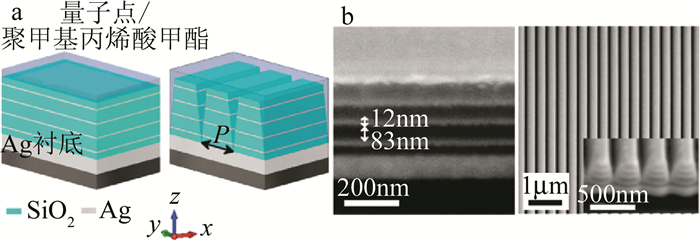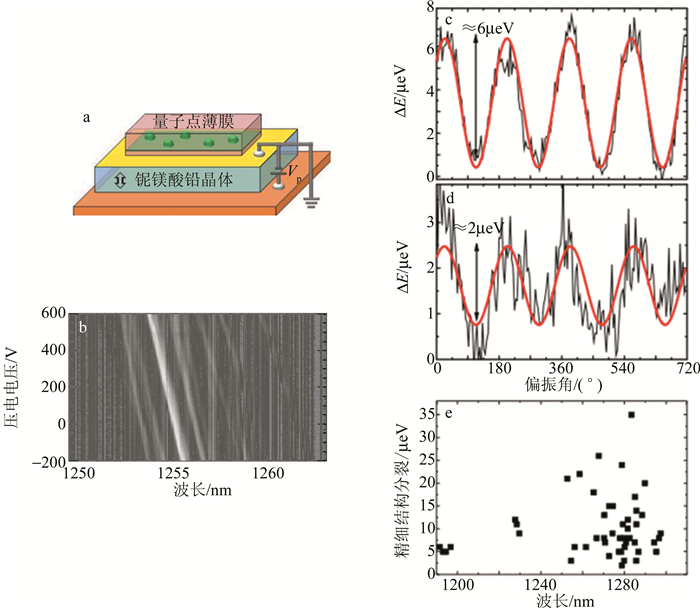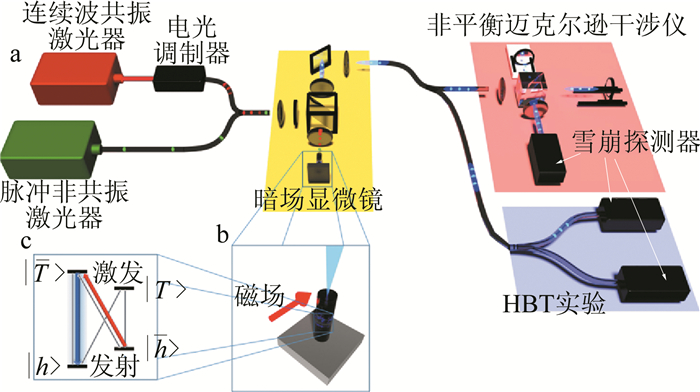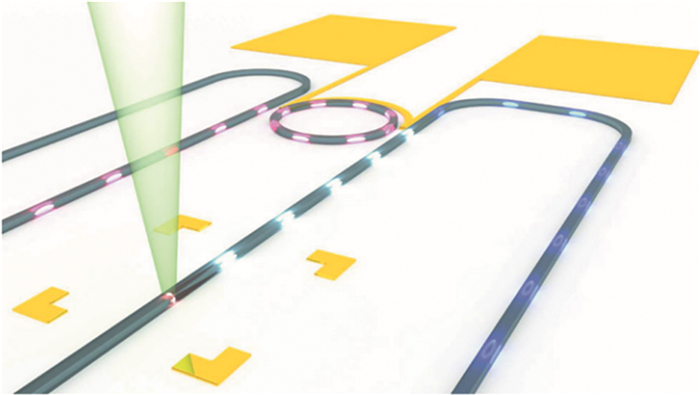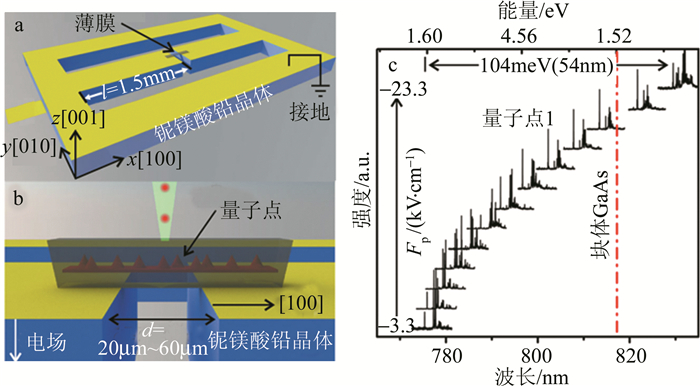|
[1]
|
NIELSEN M A, CHUANG I, GROVER L K. Quantum computation and quantum information[J]. American Journal of Physics, 2002, 70(5): 558-559. |
|
[2]
|
BEVERATOS A, BROURI R, GACOIN T, et al. Single photon quantum cryptography[J]. Physical Review Letters, 2002, 89(18): 187901. |
|
[3]
|
CHEUNG J Y, CHUNNILALL C J, WOOLLIAMS E R, et al. The quantum candela: A re-definition of the standard units for optical radiation[J]. Journal of Modern Optics, 2007, 54(2/3): 373-396. |
|
[4]
|
KOK P, MUNRO W J, NEMOTO K, et al. Linear optical quantum computing with photonic qubits[J]. Reviews of Modern Physics, 2007, 79(1): 135-174. |
|
[5]
|
ASPURU-GUZIK A, WALTHER P. Photonic quantum simulators[J]. Nature Physics, 2012, 8(4): 285-291. |
|
[6]
|
O'BRIEN J L, FURUSAWA A, VUČKOVIC' J. Photonic quantum technologies[J]. Nature Photonics, 2009, 3(12): 687-695. |
|
[7]
|
AHARONOVICH I, ENGLUND D, TOTH M. Solid-state single-photon emitters[J]. Nature Photonics, 2016, 10(10): 631-641. |
|
[8]
|
LODAHL P, MAHMOODIAN S, STOBBE S. Interfacing single photons and single quantum dots with photonic nanostructures[J]. Reviews of Modern Physics, 2015, 87(2): 347-400. |
|
[9]
|
ATATVRE M, ENGLUND D, VAMIVAKAS N, et al. Material platforms for spin-based photonic quantum technologies[J]. Nature Reviews Materials, 2018, 3(5): 38-51. |
|
[10]
|
AKOPIAN N, LINDNER N H, POEM E, et al. Entangled photon pairs from semiconductor quantum dots[J]. Physical Review Letters, 2006, 96(13): 130501. |
|
[11]
|
YOUNG R J, STEVENSON R M, ATKINSON P, et al. Improved fidelity of triggered entangled photons from single quantum dots[J]. New Journal of Physics, 2006, 8(2): 29-39. |
|
[12]
|
HAFENBRAK R, ULRICH S M, MICHLER P, et al. Triggered polarization-entangled photon pairs from a single quantum dot up to 30K[J]. New Journal of Physics, 2007, 9(9): 315-331. |
|
[13]
|
CHUNNILALL C J, DEGIOVANNI I P, KVCK S, et al. Metrology of single-photon sources and detectors: A review[J]. Optical Engineering, 2014, 53(8): 081910. |
|
[14]
|
de GREVE K, YU L, MCMAHON P L, et al. Quantum-dot spin-photon entanglement via frequency downconversion to telecom wavelength[J]. Nature, 2012, 491(7424): 421-425. |
|
[15]
|
GAO W B, FALLAHI P, TOGAN E, et al. Observation of entanglement between a quantum dot spin and a single photon[J]. Nature, 2012, 491(7424): 426-430. |
|
[16]
|
SCHAIBLEY J R, BURGERS A P, McCRACKEN G A, et al. Demonstration of quantum entanglement between a single electron spin confined to an InAs quantum dot and a photon[J]. Physical Review Letters, 2013, 110(16): 167401. |
|
[17]
|
TAKEMOTO K, NAMBU Y, MIYAZAWA T, et al. Quantum key distribution over 120km using ultrahigh purity single-photon source and superconducting single-photon detectors[J]. Scientific Reports, 2015, 5: 14383. |
|
[18]
|
HE Y, HE Y M, WEI Y J, et al. Quantum state transfer from a single photon to a distant quantum-dot electron spin[J]. Physical Review Letters, 2017, 119(6): 060501. |
|
[19]
|
VARNAVA C, STEVENSON R M, NILSSON J, et al. An entangled-LED-driven quantum relay over 1km[J]. NPJ Quantum Information, 2016, 2: 16006. |
|
[20]
|
SENELLART P, SOLOMON G, WHITE A. High-performance semiconductor quantum-dot single-photon sources[J]. Nature Nanotechnology, 2017, 12(11): 1026-1039. |
|
[21]
|
LODAHL P. Quantum-dot based photonic quantum networks[J]. Quantum Science and Technology, 2017, 3(1): 013001. |
|
[22]
|
HUBER D, REINDL M, ABERL J, et al. Semiconductor quantum dots as an ideal source of polarization-entangled photon pairs on-demand: A review[J]. Journal of Optics, 2018, 20(7): 073002. |
|
[23]
|
BENSON O, SANTORI C, PELTON M, et al. Regulated and entangled photons from a single quantum dot[J]. Physical Review Letters, 2000, 84(11): 2513-2516. |
|
[24]
|
GÉRARD J M, SERMAGE B, GAYRAL B, et al. Enhanced spontaneous emission by quantum boxes in a monolithic optical microcavity[J]. Physical Review Letters, 1998, 81(5): 1110-1113. |
|
[25]
|
LODAHL P, van DRIEL A F, NIKOLAEV I S, et al. Controlling the dynamics of spontaneous emission from quantum dots by photonic crystals[J]. Nature, 2004, 430(7000): 654-657. |
|
[26]
|
ENGLUND D, FATTAL D, WAKS E, et al. Controlling the spontaneous emission rate of single quantum dots in a two-dimensional photonic crystal[J]. Physical Review Letters, 2005, 95(1): 013904. |
|
[27]
|
GRANGE T, HORNECKER G, HUNGER D, et al. Cavity-funneled generation of indistinguishable single photons from strongly dissipative quantum emitters[J]. Physical Review Letters, 2015, 114(19): 193601. |
|
[28]
|
SAPIENZA L, DAVANO M, BADOLATO A, et al. Nanoscale optical positioning of single quantum dots for bright and pure single-photon emission[J]. Nature Communications, 2015, 6: 8833. |
|
[29]
|
TOMAŠ M S, LENAC Z. Spontaneous-emission spectrum in an absorbing Fabry-Perot cavity[J]. Physical Review, 1999, A60(3): 2431-2437. |
|
[30]
|
CHOY J T, HAUSMANN B J M, BABINEC T M, et al. Enhanced single-photon emission from a diamond-silver aperture[J]. Nature Photonics, 2011, 5(12): 738-743. |
|
[31]
|
BARNES W L, BJÖRK G, GÉRARD J M, et al. Solid-state single photon sources: Light collection strategies[J]. The European Physical Journal, 2002, D18(2): 197-210. |
|
[32]
|
SOMASCHI N, GIESZ V, de SANTIS L, et al. Near-optimal single-photon sources in the solid state[J]. Nature Photonics, 2016, 10(5): 340-345. |
|
[33]
|
LOREDO J C, BROOME M A, HILAIRE P, et al. Boson sampling with single-photon fock states from a bright solid-state source[J]. Physical Review Letters, 2017, 118(13): 130503. |
|
[34]
|
LIAO S K, YONG H L, LIU C, et al. Long-distance free-space quantum key distribution in daylight towards inter-satellite communication[J]. Nature Photonics, 2017, 11(8): 509-513. |
|
[35]
|
MERMILLOD Q, JAKUBCZYK T, DELMONTE V, et al. Harvesting, coupling, and control of single-exciton coherences in photonic waveguide antennas[J]. Physical Review Letters, 2016, 116(16): 163903. |
|
[36]
|
DING X, HE Y, DUAN Z C, et al. On-demand single photons with high extraction efficiency and near-unity indistinguishability from a resonantly driven quantum dot in a micropillar[J]. Physical Review Letters, 2016, 116(2): 020401. |
|
[37]
|
MIYAZAWA T, TAKEMOTO K, SAKUMA Y, et al. Single-photon generation in the 1.55μm optical-fiber band from an InAs/InP quantum dot[J]. Japanese Journal of Applied Physics, 2005, 44(5L): L620-L622. |
|
[38]
|
SONG H Z, TAKEMOTO K, MIYAZAWA T, et al. Design of Si/SiO2 micropillar cavities for Purcell-enhanced single photon emission at 1.55μm from InAs/InP quantum dots[J]. Optics Letters, 2013, 38(17): 3241-3244. |
|
[39]
|
SONG H Zh, TAKEMOTO K, MIYAZAWA T, et al. High quality-factor Si/SiO2-InP hybrid micropillar cavities with submicrometer diameter for 1.55μm telecommunication band[J]. Optics Express, 2015, 23(12): 16264-16272. |
|
[40]
|
SONG H Z, HADI M, ZHENG Y, et al. InGaAsP/InP nanocavity for single-photon source at 1.55μm telecommunication band[J]. Nanoscale Research Letters, 2017, 12(1): 128-135. |
|
[41]
|
KIM J H, CAI T, RICHARDSON C J K, et al. Two-photon interference from a bright single-photon source at telecom wavelengths[J]. Optica, 2016, 3(6): 577-584. |
|
[42]
|
BIROWOSUTO M D, SUMIKURA H, MATSUO S, et al. Fast Purcell-enhanced single photon source in 1550nm telecom band from a resonant quantum dot-cavity coupling[J]. Scientific Reports, 2012, 2: 321-326. |
|
[43]
|
ARCARI M, SÖLLNER I, JAVADI A, et al. Near-unity coupling efficiency of a quantum emitter to a photonic crystal waveguide[J]. Physical Review Letters, 2014, 113(9): 093603. |
|
[44]
|
THYRRESTRUP H, KIRŠANSKÉ G, le JEANNIC H, et al. Quantum optics with near-lifetime-limited quantum-dot transitions in a nanophotonic waveguide[J]. Nano Letters, 2018, 18(3): 1801-1806. |
|
[45]
|
RALPH T C, SÖLLNER I, MAHMOODIAN S, et al. Photon sorting, efficient Bell measurements, and a deterministic controlled-Z gate using a passive two-level nonlinearity[J]. Physical Review Letters, 2015, 114(17): 173603. |
|
[46]
|
OZEL T, NIZAMOGLU S, SEFUNC M A, et al. Anisotropic emission from multilayered plasmon resonator nanocomposites of isotropic semiconductor quantum dots[J]. ACS Nano, 2011, 5(2): 1328-1334. |
|
[47]
|
BELACEL C, HABERT B, BIGOURDAN F, et al. Controlling spontaneous emission with plasmonic optical patch antennas[J]. Nano Letters, 2013, 13(4): 1516-1521. |
|
[48]
|
ZHUKOVSKY S V, OZEL T, MUTLUGUN E, et al. Hyperbolic metamaterials based on quantum-dot plasmon-resonator nanocomposites[J]. Optics Express, 2014, 22(15): 18290-18298. |
|
[49]
|
CONANT R T, DRIJBER R A, HADDIX M L, et al. Sensitivity of organic matter decomposition to warming varies with its quality[J]. Global Change Biology, 2008, 14(4): 868-877. |
|
[50]
|
LI L, WANG W, LUK T S, et al. Enhanced quantum dot spontaneous emission with multilayer metamaterial nanostructures[J]. ACS Photonics, 2017, 4(3): 501-508. |
|
[51]
|
KOZAI T D Y, LANGHALS N B, PATEL P R, et al. Ultrasmall implantable composite microelectrodes with bioactive surfaces for chronic neural interfaces[J]. Nature Materials, 2012, 11(12): 1065-1073. |
|
[52]
|
BORETTI A, ROSA L, MACKIE A, et al. Electrically driven quantum light sources[J]. Advanced Optical Materials, 2015, 3(8): 1012-1033. |
|
[53]
|
KUHLMANN A V, PRECHTEL J H, HOUEL J, et al. Transform-limited single photons from a single quantum dot[J]. Nature Communications, 2015, 6: 82041-1-8. |
|
[54]
|
KIRŠANSKÉ G, THYRRESTRUP H, DAVEAU R S, et al. Indistinguishable and efficient single photons from a quantum dot in a planar nanobeam waveguide[J]. Physical Review, 2017, B96(16): 165306. |
|
[55]
|
MICHLER P, IMAMOǦLU A, MASON M D, et al. Quantum correlation among photons from a single quantum dot at room temperature[J]. Nature, 2000, 406(6799): 968-970. |
|
[56]
|
REITHMAIER G, LICHTMANNECKER S, REICHERT T, et al. On-chip time resolved detection of quantum dot emission using integrated superconducting single photon detectors[J]. Scientific Reports, 2013, 3: 1901-1906. |
|
[57]
|
LIN X, DAI X, PU C, et al. Electrically-driven single-photon sources based on colloidal quantum dots with near-optimal antibunching at room temperature[J]. Nature Communications, 2017, 8: 1132. |
|
[58]
|
FENG S W, CHENG C Y, WEI C Y, et al. Purification of single photons from room-temperature quantum dots[J]. Physical Review Letters, 2017, 119(14): 143601. |
|
[59]
|
LOHRMANN A, IWAMOTO N, BODROG Z, et al. Single-photon emitting diode in silicon carbide[J]. Nature Communications, 2015, 6: 7783. |
|
[60]
|
AVSAR A, TAN J Y, LUO X, et al. van der Waals bonded Co/h-BN contacts to ultrathin black phosphorus devices. Nano Letters, 2017, 17(9): 5361-5367. |
|
[61]
|
GOLD P, THOMA A, MAIER S, et al. Two-photon interference from remote quantum dots with inhomogeneously broadened linewidths[J]. Physical Review, 2014, B89(3): 035313. |
|
[62]
|
REINDL M, JONS K D, HUBER D, et al. Phonon-assisted two-photon interference from remote quantum emitters[J]. Nano Letters, 2017, 17(7): 4090-4095. |
|
[63]
|
DELTEIL A, SUN Z, FÄLT S, et al. Realization of a cascaded quantum system: Heralded absorption of a single photon qubit by a single-electron charged quantum dot[J]. Physical Review Letters, 2017, 118(17): 177401. |
|
[64]
|
DING F, SINGH R, PLUMHOF J D, et al. Tuning the exciton binding energies in single self-assembled InGaAs/GaAs quantum dots by piezoelectric-induced biaxial stress[J]. Physical Review Le-tters, 2010, 104(6): 067405. |
|
[65]
|
ZOPF M, MACHA T, KEIL R, et al. Frequency feedback for two-photon interference from separate quantum dots[J]. Physical Review, 2018, B98(16): 161302. |
|
[66]
|
DENG Y H, WANG H, DING X, et al. Quantum interference between light sources separated by 150 million kilometers[J]. Physical Review Letters, 2019, 123(8): 080401. |
|
[67]
|
ZHANG R, GARNER S R, HAU L V. Creation of long-term coherent optical memory via controlled nonlinear interactions in Bose-Einstein condensates[J]. Physical Review Letters, 2009, 103(23): 233602. |
|
[68]
|
SPECHT H P, NÖLLEKE C, REISERER A, et al. A single-atom quantum memory[J]. Nature, 2011, 473(7346): 190-193. |
|
[69]
|
SHIELDS A J. Semiconductor quantum light sources[J]. Nature Photonics, 2007, 1: 215-223. |
|
[70]
|
HUANG H, TROTTA R, HUO Y, et al. Electrically-pumped wavelength-tunable GaAs quantum dots interfaced with rubidium atoms[J]. ACS Photonics, 2017, 4(4): 868-872. |
|
[71]
|
ORIEUX A, VERSTEEGH M A M, JÖNS K D, et al. Semiconductor devices for entangled photon pair generation: A review[J]. Reports on Progress in Physics, 2017, 80(7): 076001. |
|
[72]
|
GONG M, ZHANG W, GUO G C, et al. Exciton polarization, fine-structure splitting, and the asymmetry of quantum dots under uniaxial stress[J]. Physical Review Letters, 2011, 106(22): 227401. |
|
[73]
|
RASTELLI A, DING F, PLUMHOF J D, et al. Controlling quantum dot emission by integration of semiconductor nanomembranes onto piezoelectric actuators[J]. Physica Status Solidi (b), 2012, 249(4): 687-696. |
|
[74]
|
GERARDOT B D, SEIDL S, DALGARNO P A, et al. Manipulating exciton fine structure in quantum dots with a lateral electric field[J]. Applied Physics Letters, 2007, 90(4): 041101. |
|
[75]
|
BENNETT A J, POOLEY M A, STEVENSON R M, et al. Electric-field-induced coherent coupling of the exciton states in a single quantum dot[J]. Nature Physics, 2010, 6(12): 947-951. |
|
[76]
|
HUDSON A J, STEVENSON R M, BENNETT A J, et al. Coherence of an entangled exciton-photon state[J]. Physical Review Le-tters, 2007, 99(26): 266802. |
|
[77]
|
SAPIENZA L, MALEIN R N E, KUKLEWICZ C E, et al. Exciton fine-structure splitting of telecom-wavelength single quantum dots: Statistics and external strain tuning[J]. Physical Review, 2013, B88(15): 155330. |
|
[78]
|
PATEL R B, BENNETT A J, FARRER I, et al. Two-photon interference of the emission from electrically tunable remote quantum dots[J]. Nature Photonics, 2010, 4(9): 632-635. |
|
[79]
|
DELTEIL A, SUN Z, GAO W, et al. Generation of heralded entanglement between distant hole spins[J]. Nature Physics, 2016, 12(3): 218-233. |
|
[80]
|
HÖFER B, OLBRICH F, KETTLER J, et al. Tuning emission energy and fine structure splitting in quantum dots emitting in the telecom O-band[J]. AIP Advances, 2019, 9(8): 085112. |
|
[81]
|
TROTTA R, ZALLO E, ORTIX C, et al. Universal recovery of the energy-level degeneracy of bright excitons in InGaAs quantum dots without a structure symmetry[J]. Physical Review Letters, 2012, 109(14): 147401. |
|
[82]
|
LIU Z K, YANG L X, WU S C, et al. Observation of unusual topological surface states in half-Heusler compounds LnPtBi (Ln= Lu, Y)[J]. Nature Communications, 2016, 7: 12924. |
|
[83]
|
SALTER C L, STEVENSON R M, FARRER I, et al. An entangled-light-emitting diode[J]. Nature, 2010, 465(7298): 594-597. |
|
[84]
|
CHUNG T H, JUSKA G, MORONI S T, et al. Selective carrier injection into patterned arrays of pyramidal quantum dots for entangled photon light-emitting diodes[J]. Nature Photonics, 2016, 10(12): 782-787. |
|
[85]
|
KEIL R, ZOPF M, CHEN Y, et al. Solid-state ensemble of highly entangled photon sources at rubidium atomic transitions[J]. Nature Communications, 2017, 8: 15501. |
|
[86]
|
XIANG Z H, HUWER J, STEVENSON R M, et al. Long-term transmission of entangled photons from a single quantum dot over deployed fiber[J]. Scientific Reports, 2019, 9: 4111. |
|
[87]
|
JUSKA G, DIMASTRODONATO V, MERENI L O, et al. Towards quantum-dot arrays of entangled photon emitters[J]. Nature Photonics, 2013, 7(7): 527-531. |
|
[88]
|
MUSIAŁ A, GOLD P, ANDRZEJEWSKI J, et al. Toward weak confinement regime in epitaxial nanostructures: Interdependence of spatial character of quantum confinement and wave function extension in large and elongated quantum dots[J]. Physical Review, 2014, B90(4): 045430. |
|
[89]
|
WATANABE K, KOGUCHI N, GOTOH Y. Fabrication of GaAs quantum dots by modified droplet epitaxy[J]. Japanese Journal of Applied Physics, 2000, 39(2A): L79-L81. |
|
[90]
|
WANG Z M, LIANG B L, SABLON K A, et al. Nanoholes fabricated by self-assembled gallium nanodrill on GaAs (100)[J]. Applied Physics Letters, 2007, 90(11): 113120. |
|
[91]
|
HUO Y H, RASTELLI A, SCHMIDT O G. Ultra-small excitonic fine structure splitting in highly symmetric quantum dots on GaAs (001) substrate[J]. Applied Physics Letters, 2013, 102(15): 152105. |
|
[92]
|
HUO Y H, KŘÁPEK V, RASTELLI A, et al. Volume dependence of excitonic fine structure splitting in geometrically similar quantum dots[J]. Physical Review, 2014, B90(4): 041304. |
|
[93]
|
HUBER D, REINDL M, HUO Y, et al. Highly indistinguishable and strongly entangled photons from symmetric GaAs quantum dots[J]. Nature Communications, 2017, 8: 15506. |
|
[94]
|
BASSO BASSET F, BIETTI S, REINDL M, et al. High-yield fabrication of entangled photon emitters for hybrid quantum networking using high-temperature droplet epitaxy[J]. Nano Letters, 2017, 18(1): 505-512. |
|
[95]
|
FURIS M, HTOON H, PETRUSKA M A, et al. Bright-exciton fine structure and anisotropic exchange in CdSe nanocrystal quantum dots[J]. Physical Review, 2006, B73(24): 241313. |
|
[96]
|
GIOVANNETTI V, LLOYD S, MACCONE L. Quantum-enhanced measurements: Beating the standard quantum limit[J]. Science, 2004, 306(5700): 1330-1336. |
|
[97]
|
HACKER B, WELTE S, REMPE G, et al. A photon-photon quantum gate based on a single atom in an optical resonator[J]. Nature, 2016, 536(7615): 193-196. |
|
[98]
|
LEE J P, BENNETT A J, STEVENSON R M, et al. Multi-dimensional photonic states from a quantum dot[J]. Quantum Science and Technology, 2018, 3(2): 024008. |
|
[99]
|
BENNETT A J, LEE J P, ELLIS D J P, et al. Cavity-enhanced coherent light scattering from a quantum dot[J]. Science Advances, 2016, 2(4): e1501256. |
|
[100]
|
MVLLER M, VURAL H, SCHNEIDER C, et al. Quantum-dot single-photon sources for entanglement enhanced interferometry[J]. Physical Review Letters, 2017, 118(25): 257402. |
|
[101]
|
PERNICE W H P, SCHUCK C, MINAEVA O, et al. High-speed and high-efficiency travelling wave single-photon detectors embedded in nanophotonic circuits[J]. Nature Communications, 2012, 3: 1325. |
|
[102]
|
CLAUDON J, BLEUSE J, MALIK N S, et al. A highly efficient single-photon source based on a quantum dot in a photonic nanowire[J]. Nature Photonics, 2010, 4(3): 174-177. |
|
[103]
|
GAO W B, FALLAHI P, TOGAN E, et al. Quantum teleportation from a propagating photon to a solid-state spin qubit[J]. Nature Communications, 2013, 4: 2744. |
|
[104]
|
GAZZANO O, de VASCONCELLOS S M, ARNOLD C, et al. Bright solid-state sources of indistinguishable single photons[J]. Nature Communications, 2013, 4: 1425. |
|
[105]
|
DIAMANTI E, LO H K, QI B, et al. Practical challenges in quantum key distribution[J]. NPJ Uantum Information, 2016, 2: 16025. |
|
[106]
|
CHEN Y, ZHANG J, ZOPF M, et al. Wavelength-tunable entangled photons from silicon-integrated Ⅲ-Ⅴ quantum dots[J]. Nature Communications, 2016, 7: 10387. |
|
[107]
|
PRTLJAGA N, COLES R J, O'HARA J, et al. Monolithic integration of a quantum emitter with a compact on-chip beam-splitter[J]. Applied Physics Letters, 2014, 104(23): 231107. |
|
[108]
|
JÖNS K D, RENGSTL U, OSTER M, et al. Monolithic on-chip integration of semiconductor waveguides, beamsplitters and single-photon sources[J]. Journal of Physics, 2015, D48(8): 085101. |
|
[109]
|
MIDOLO L, HANSEN S L, ZHANG W, et al. Electro-optic routing of photons from a single quantum dot in photonic integrated circuits[J]. Optics Express, 2017, 25(26): 33514. |
|
[110]
|
DAVANCO M, LIU J, SAPIENZA L, et al. Heterogeneous integration for on-chip quantum photonic circuits with single quantum dot devices[J]. Nature Communications, 2017, 8: 889. |
|
[111]
|
KIM J H, AGHAEIMEIBODI S, RICHARDSON C J K, et al. Hybrid integration of solid-state quantum emitters on a silicon photonic chip[J]. Nano Letters, 2017, 17(12): 7394-7400. |
|
[112]
|
ELSHAARI A W, ZADEH I E, FOGNINI A, et al. On-chip single photon filtering and multiplexing in hybrid quantum photonic circuits[J]. Nature Communications, 2017, 8: 379. |
|
[113]
|
GSCHREY M, THOMA A, SCHNAUBER P, et al. Highly indistinguishable photons from deterministic quantum-dot microlenses utilizing three-dimensional in situ electron-beam lithography[J]. Nature Communications, 2015, 6: 7662. |
|
[114]
|
SANTORI C, FATTAL D, VUČKIVUC' J, et al. Indistinguishable photons from a single-photon device[J]. Nature, 2002, 419(6907): 594-597. |
|
[115]
|
KIM J H, RICHARDSON C J K, LEAVITT R P, et al. Two-photon interference from the far-field emission of chip-integrated cavity-coupled emitters[J]. Nano Letters, 2016, 16(11): 7061-7066. |
|
[116]
|
WU X, JIANG P, RAZINSKAS G, et al. On-chip single-plasmon nanocircuit driven by a self-assembled quantum dot[J]. Nano Letters, 2017, 17(7): 4291-4296. |
|
[117]
|
KEIL R, KAUFMANN T, KAUTEN T, et al. Hybrid waveguide-bulk multi-path interferometer with switchable amplitude and phase[J]. APL Photonics, 2016, 1(8): 081302. |
|
[118]
|
ZADEH I E, ELSHAARI A W, JÖNS K D, et al. Deterministic integration of single photon sources in silicon based photonic circuits[J]. Nano Letters, 2016, 16(4): 2289-2294. |
|
[119]
|
YUAN X, WEYHAUSEN-BRINKMANN F, MARTÍN-SÁNCHEZ J, et al. Uniaxial stress flips the natural quantization axis of a quantum dot for integrated quantum photonics[J]. Nature Communications, 2018, 9: 3058. |
|
[120]
|
LIN H, LIN C H, LAI W C, et al. Stress tuning of strong and weak couplings between quantum dots and cavity modes in microdisk microcavities[J]. Physical Review, 2011, B84(20): 201301. |
|
[121]
|
SILVERSTONE J W, BONNEAU D, O'BRIEN J L, et al. Silicon quantum photonics[J]. IEEE Journal of Selected Topics in Quantum Electronics, 2016, 22(6): 390-402. |
|
[122]
|
REITHMAIER G, KANIBER M, FLASSIG F, et al. On-chip generation, routing, and detection of resonance fluorescence[J]. Nano Letters, 2015, 15(8): 5208-5213. |
|
[123]
|
CALIC M, JARLOV C, GALLO P, et al. Deterministic radiative coupling of two semiconductor quantum dots to the optical mode of a photonic crystal nanocavity[J]. Scientific Reports, 2017, 7: 4100. |
|
[124]
|
STRAUβ M, KAGANSKIY A, VOIGT R, et al. Resonance fluorescence of a site-controlled quantum dot realized by the buried-stressor growth technique[J]. Applied Physics Letters, 2017, 110(11): 111101. |
|
[125]
|
JONS K D, ATKINSON P, MVLLER M, et al. Triggered indistinguishable single photons with narrow line widths from site-controlled quantum dots[J]. Nano Letters, 2012, 13(1): 126-130. |
|
[126]
|
DOUSSE A, LANCO L, SUFFCZYN'SKI J, et al. Controlled light-matter coupling for a single quantum dot embedded in a pillar microcavity using far-field optical lithography[J]. Physical Review Letters, 2008, 101(26): 267404. |
|
[127]
|
SCHNAUBER P, SCHALL J, BOUNOUAR S, et al. Deterministic integration of quantum dots into on-chip multimode interference beamsplitters using in situ electron beam lithography[J]. Nano Letters, 2018, 18(4): 2336-2342. |
|
[128]
|
HALLETT D, FOSTER A P, HURST D L, et al. Electrical control of nonlinear quantum optics in a nano-photonic waveguide[J]. Optica, 2018, 5(5): 644-650. |
|
[129]
|
PYAYT A L, WILEY B, XIA Y, et al. Integration of photonic and silver nanowire plasmonic waveguides[J]. Nature Nanotechnology, 2008, 3(11): 660-665. |
|
[130]
|
GUO X, QIU M, BAO J, et al. Direct coupling of plasmonic and photonic nanowires for hybrid nanophotonic components and circuits[J]. Nano Letters, 2009, 9(12): 4515-4519. |
|
[131]
|
WEI H, WANG Z, TIAN X, et al. Cascaded logic gates in nanophotonic plasmon networks[J]. Nature Communications, 2011, 2: 387. |
|
[132]
|
WEI H, XU H. Nanowire-based plasmonic waveguides and devices for integrated nanophotonic circuits[J]. Nanophotonics, 2012, 1(2): 155-169. |
|
[133]
|
CHANG D E, SØRENSEN A S, DEMLER E A, et al. A single-photon transistor using nanoscale surface plasmons[J]. Nature Physics, 2007, 3(11): 807-812. |
|
[134]
|
KUMAR S, HUCK A, ANDERSEN U L. Efficient coupling of a single diamond color center to propagating plasmonic gap modes[J]. Nano Letters, 2013, 13(3): 1221-1225. |
|
[135]
|
LI Q, WEI H, XU H. Quantum yield of single surface plasmons generated by a quantum dot coupled with a silver nanowire[J]. Nano Letters, 2015, 15(12): 8181-8187. |
|
[136]
|
LI Q, PAN D, WEI H, et al. Plasmon-assisted selective and super-resolving excitation of individual quantum emitters on a metal nanowire[J]. Nano Letters, 2018, 18(3): 2009-2015. |
|
[137]
|
SONG H Zh, USUKI T, HIROSE S, et al. Site-controlled photoluminescence at telecommunication wavelength from InAs/InP quantum dots[J]. Applied Physics Letters, 2005, 86(11): 113118. |
|
[138]
|
DALACU D, MNAYMNEH K, SAZONOVA V, et al. Deterministic emitter-cavity coupling using a single-site controlled quantum dot[J]. Physical Review, 2010, B82(3): 033301. |
|
[139]
|
DALACU D, MNAYMNEH K, LAPOINTE J, et al. Ultraclean emission from InAsP quantum dots in defect-free wurtzite InP nanowires[J]. Nano Letters, 2012, 12(11): 5919-5923. |
|
[140]
|
KEIL R, ZOPF M, CHEN Y, et al. Solid-state ensemble of highly entangled photon sources at rubidium atomic transitions[J]. Nature Communications, 2017, 8: 15501. |
|
[141]
|
JÖNS K D, SCHWEICKERT L, VERSTEEGH M A M, et al. Bright nanoscale source of deterministic entangled photon pairs violating Bell's inequality[J]. Scientific Reports, 2017, 7: 1700. |
|
[142]
|
HUBER T, PREDOJEVIC A, KHOSHNEGAR M, et al. Polarization entangled photons from quantum dots embedded in nanowires[J]. Nano Letters, 2014, 14(12): 7107-7114. |
|
[143]
|
HAFFOUZ S, ZEUNER K D, DALACU D, et al. Bright single InAsP quantum dots at telecom wavelengths in position-controlled InP nanowires: The role of the photonic waveguide[J]. Nano Letters, 2018, 18(5): 3047-3052. |
|
[144]
|
UNOLD T, MUELLER K, LIENAU C, et al. Optical control of excitons in a pair of quantum dots coupled by the dipole-dipole interaction[J]. Physical Review Letters, 2005, 94(13): 137404. |
|
[145]
|
KASPRZAK J, PATTON B, SAVONA V, et al. Coherent coupling between distant excitons revealed by two-dimensional nonlinear hyperspectral imaging[J]. Nature Photonics, 2011, 5(1): 57-63. |
|
[146]
|
TEMNOV V V, WOGGON U. Superradiance and subradiance in an inhomogeneously broadened ensemble of two-level systems coupled to a low-Q cavity[J]. Physical Review Letters, 2005, 95(24): 243602. |
|
[147]
|
BETZIG E, CHICHESTER R J. Single molecules observed by near-field scanning optical microscopy[J]. Science, 1993, 262(5138): 1422-1425. |
|
[148]
|
de ASSIS P L, YEO I, GLOPPE A, et al. Strain-gradient position mapping of semiconductor quantum dots[J]. Physical Review Letters, 2017, 118(11): 117401. |
|
[149]
|
SONG H Zh, USUKI T, NAKATA Y, et al. Formation of InAs/GaAs quantum dots from a subcritical InAs wetting layer: A reflection high-energy electron diffraction and theoretical study[J]. Physical Review, 2006, B73(11): 115327. |
|
[150]
|
LIU J, KONTHASINGHE K, DAVANÇO M, et al. Single self-assembled InAs/GaAs quantum dots in photonic nanostructures: The role of nanofabrication[J]. Physical Review Applied, 2018, 9(6): 064019. |
|
[151]
|
KREINBERG S, PORTE X, SCHICKE D, et al. Mutual coupling and synchronization of optically coupled quantum-dot micropillar lasers at ultra-low light levels[J]. Nature Communications, 2019, 10: 1539. |
|
[152]
|
STOCK E, ALBERT F, HOPFMANN C, et al. On-chip quantum optics with quantum dot microcavities[J]. Advanced Materials, 2013, 25(5): 707-710. |

 Map
Map




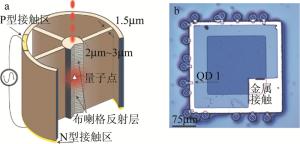
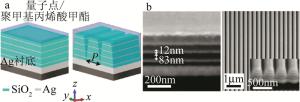
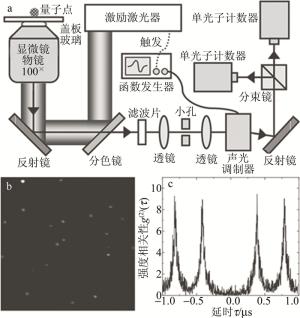

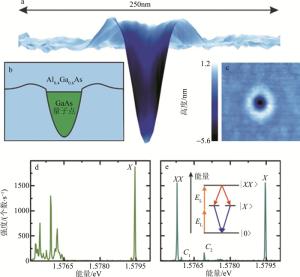

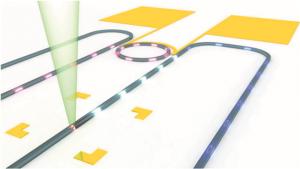
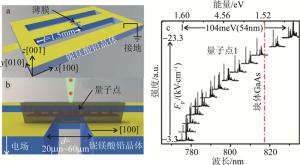
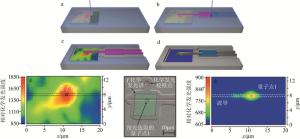
 DownLoad:
DownLoad:
